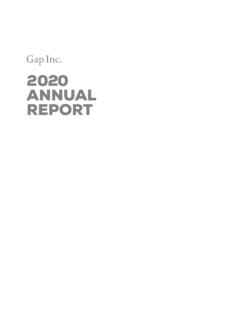Transcription of An introduction to the - WHO
1 An introduction to theWorking for healthWHO Library Cataloguing-in-Publication DataWorking for health: an introduction to the World Health World Health Organization. 2. World health. 3. Communicable disease control. 4. Chronic disease - prevention and control. 5. Health services accessibility. I. World Health Organization. ISBN 92 4 156313 5 (NLM classification: WA ) World Health Organization 2007 (updated edition)All rights reserved. Publications of the World Health Organization can be obtained from WHO Press, World Health Organization, 20 Avenue Appia, 1211 Geneva 27, Switzerland (tel: +41 22 791 3264; fax: +41 22 791 4857; email: Requests for permission to reproduce or translate WHO publications whether for sale or for noncommercial distribution should be addressed to WHO Press, at the above address (fax: +41 22 791 4806; email: The designations employed and the presentation of the material in this publication do not imply the expression of any opinion whatsoever on the part of the World Health Organization concerning the legal status of any country, territory, city or area or of its authorities, or concerning the delimitation of its frontiers or boundaries.))
2 Dotted lines on maps represent approximate border lines for which there may not yet be full credits: and WHO/Eric Miller, WHO/Chris de Bode, (pregnant woman) WHO/Pallava Bagla, (mother and baby) IFRC/Marko in SwitzerlandWHO works to make these people and their unmet health needs more visible and thus worthy of our priority concern. In addressing the needs of these populations, we work together with governments and a host of agencies, foundations, nongovernmental organizations, and representatives of the private sector and civil statistic from these vulnerable groups stands out as especially tragic: more than 500,000 women die each year from complications of pregnancy. To reverse this trend, WHO and its partners must address complex problems that have their roots in social and economic conditions and the failure of health services to reach the poor. These same problems account for many other needless of our efforts and their prospects for success are greatly aided by today s unprecedented interest in health as a route to development, accompanied by equally unprecedented energy, initiatives, and brochure provides some highlights from our broad range of activities both high-profile and behind-the-scenes that are working to improve world Margaret ChanDirector-GeneralSome of the work done by WHO is visible and familiar: the response teams sent to contain outbreaks, the emergency assistance to people affected by disasters, or the mass immunization campaigns that protect the world s children from killer work is visible because the diseases being addressed HIV/AIDS, tuberculosis, and malaria have such a high profile for global health.
3 The work of WHO is also visible in statistics, as we chart changing trends and sound the alarm when needed. As one example, we need to be concerned about the sharp rise of chronic diseases. Long thought to be the companions of affluent societies, diseases such as heart disease, cancer, and diabetes are now occurring in larger numbers and at an earlier age throughout the developing activities undertaken by WHO are largely invisible, quietly protecting the health of every person on this planet, every day. By assigning a single international name to drugs, WHO helps ensure that a prescription filled abroad is what the doctor ordered back home. Our standards help protect the safety of everyone s food and the quality of medicines and vaccines. When pollution in air or water reaches a dangerous level, it is WHO standards that are used as the greatest concern must always rest with disadvantaged and vulnerable groups. These groups are often hidden, living in remote rural areas or shantytowns and having little political voice.
4 Welcome to the World health organization Working for health: an introduction to the World health organization The World Health Organization (WHO) is the directing and coordinating authority on international health within the United Nations system. WHO experts produce health guidelines and standards, and help countries to address public health issues. WHO also supports and promotes health research. Through WHO, governments can jointly tackle global health problems and improve people s countries and two associate members are WHO s membership. They meet every year at the World Health Assembly in Geneva to set policy for the Organization, approve the Organization s budget, and every five years, to appoint the Director-General. Their work is supported by the 34-member Executive Board, which is elected by the Health Assembly. Six regional committees focus on health matters of a regional about WHO is the World health organization?
5 The World Health Assembly. WHO s 193 member countries meet to decide policy for improving are our partners in health?WHO and its Member States work with many partners, including UN agencies, donors, nongovernmental organizations, WHO collaborating centres and the private sector. Only through new ways of working and innovative partnerships can we make a difference and achieve our goals. Working for health: an introduction to the World health organizationCAIROEASTERNMEDITERRANEANREG IONWASHINGTONREGION OFTHE AMERICASBRAZZAVILLEAFRICAN REGIONWESTERNPACIFICREGIONMANILANEW DEHLISOUTH-EASTASIA REGIONCOPENHAGENEUROPEAN REGIONHQC ountry officeRegional officeHQHeadquartersWhat is the World health organization?peopleLast but not least, WHO is people. Over 8000 public health experts including doctors, epidemiologists, scientists, managers, administrators and other professionals from all over the world work for WHO in 147 country offices, six regional offices and at the headquarters in Geneva, Switzerland.
6 Working for health: an introduction to the World health organization What are our achievements?When diplomats met in San Francisco to form the United Nations in 1945, one of the things they discussed was setting up a global health organization. WHO s Constitution came into force on 7 April 1948 a date we now celebrate every year as World Health short history 95 Dr Jonas Salk (US) develops the first successful polio vaccine. 967 South African surgeon Christiaan Barnard conducts the first heart transplant. 974 The World Health Assembly adopts a resolution to create the Expanded Programme on Immunization to bring basic vaccines to all the world s children. 948 International Classification of DiseaseWHO took over the responsibility for the International Classification of Disease (ICD), which dates back to the 1850s and was first known as the International List of Causes of Death. The ICD is used to classify diseases and other health problems and has become the international standard used for clinical and epidemiological purposes.
7 974 Onchocerciasis control programmmeWHO worked for 30 years to eliminate onchocerciasis or river blindness from West Africa. 600 000 cases of blindness have been prevented and 18 million children spared from the disease. Thousands of farmers have been able to reclaim 25 million hectares of fertile river land that had been abandoned because of the risk of from 53 of WHO s 55 original member states came to the first World Health Assembly in June 1948. They decided that WHO s top priorities would be malaria, women s and children s health, tuberculosis, venereal disease, nutrition and environmental sanitation many of which we are still working on today. WHO s work has since grown to also cover health problems that were not even known in 1948, including relatively new diseases such as HIV/AIDS. 95 964 Global yaws control programmeOne of the first diseases to claim WHO s attention was yaws, a crippling and disfiguring disease that afflicted some 50 million people in 1950.
8 The global yaws control programme, fully operational between 1952-1964, used long-acting penicillin to treat yaws with one single injection. By 1965, the control programme had examined 300 million people in 46 countries and reduced global disease prevalence by more than 95%. 977 The first Essential Medicines List appeared in 1977, two years after the World Health Assembly introduced the concepts of essential drugs and national drug policy . 156 countries today have a national list of essential Working for health: an introduction to the World health organization 988 Global Polio Eradication Initiative establishedSince its launch in 1988, the Global Polio Eradication Initiative has reduced the number of cases of polio by more than 99% from more than 350 000 per year to 1956 in 2006. Spearheaded by national governments, WHO, Rotary International, the US Centers for Disease Control and Prevention and UNICEF, it has immunized more than two billion children thanks to the mobilization of more than 20 million volunteers and health workers.
9 As a result, five million children are today walking, who would otherwise have been paralysed, and more than million childhood deaths have been averted. the goal is to eradicate polio WorldWide so that no child Will ever again be paralyzed by this are our achievements? 979 Eradication of smallpoxThe eradication of smallpox a disease which had maimed and killed millions in the late 1970s is one of WHO s proudest achievements. The campaign to eradicate the deadly disease throughout the world was coordinated by WHO between 1967 and 1979. It was the first and so far the only time that a major infectious disease has been eradicated. 00 WHO Framework Convention on Tobacco Control21 May 2003 was a historic day for global public health. After nearly four years of intense negotiations, the World Health Assembly unanimously adopted WHO s first global public health treaty. The treaty is designed to reduce tobacco-related deaths and disease around the world.
10 98 Institut Pasteur (France) identifies HIV. 00 Severe Acute Respiratory Syndrome (SARS) first recognized and then controlled. 004 Adoption of the Global Strategy on Diet, Physical Activity and Health. 005 World Health Assembly revises the International Health Regulations. 978 The International Conference on Primary Health Care, in Alma-Ata, Kazakhstan sets the historic goal of Health for All to which WHO continues to Ali Moallin (left), from Somalia, was the last person known to be infected with smallpox. Here he stands with the doctor who treated him more than 25 years ago. Ali has since worked on polio eradication campaigns. Working for health: an introduction to the World health organization 5 WHO s people bring unparalleled expertise, experience and dedication to global public health. They are WHO s most valued 8000 people from more than 150 countries work for the Organization. In addition to medical doctors, public health specialists, researchers and epidemiologists, WHO staff include administrative, financial, and information systems specialists, as well as experts in the fields of health statistics, economics and emergency in Washington DC, United States Medical doctor specialized in social medicine and organization of health services PhD in integrated prevention and control of noncommunicable diseases Regional Adviser for the Americas for prevention and control of chronic diseases Participating in the response to new challenges that countries face as a result of globalization, ageing, and new rules in the market is very exciting.












